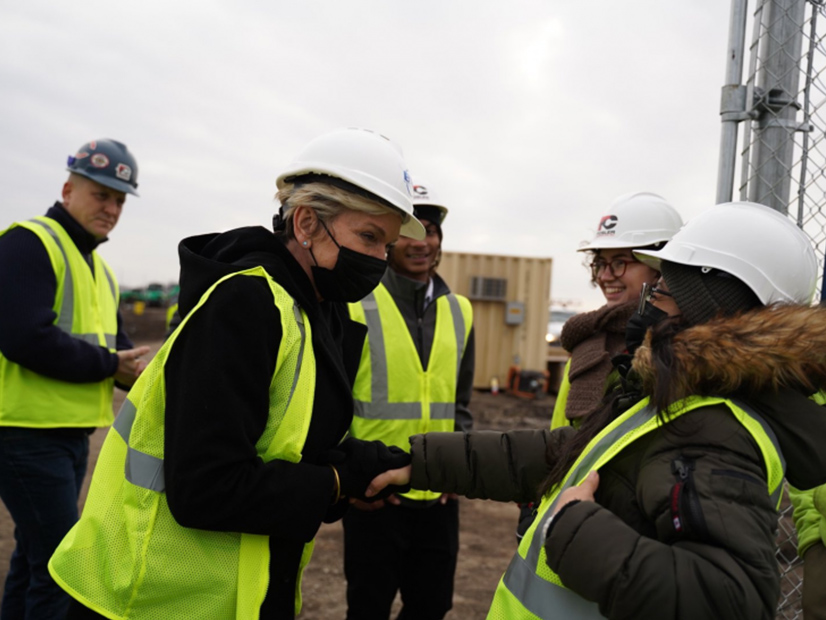
Energy Secretary Jennifer Granholm was at the National Community Solar Partnership’s Annual Summit on Tuesday to announce the Department of Energy’s latest initiatives aimed at deploying enough community solar in the next three years to provide $1 billion in savings for 5 million U.S. households.
According to the DOE, the U.S. currently has about 5.2 GW of community solar online across the country, but hitting the NCSP’s ambitious target will require getting to 20 GW by 2025.
The three initiatives announced Tuesday are intended to overcome key barriers to deployment: expanding state-level programs, improving access to finance and providing technical assistance to community organizations and other stakeholders to accelerate development of these projects.
“Not everybody can put solar panels on the roof,” Granholm said at the virtual summit. “And too many of those folks are in lower-income communities and communities of color. They don’t have to be left out, and we’re going to make sure that they won’t be. With community solar, we can give them access to clean and cheap solar energy, all at the same time.”
The DOE also wants to double household savings from community solar from the current average of 10% to 20%, which is about the same level of savings as residential solar owners get from their panels, said Kelly Speakes-Backman, principal deputy assistant secretary for energy efficiency and renewable energy.
The three initiatives announced at the summit include:
- A States Collaborative, which will support the development and expansion of state-level community solar programs. State energy officials and program administrators from about half the states and the District of Columbia will be part of the group.
- The Credit Ready Solar Initiative, which will enlist lenders, philanthropic organizations and community solar developers to improve projects’ access to financing, especially for projects serving low-to-moderate income communities.
- The NCSP Technical Assistance program, which will provide $2 million in rolling grants to program partners to “help them accelerate implementation, improve the performance of their program or project, and build capacity for future community solar development,” according to a DOE press release.
A Concentrated Market
Community solar allows individuals or groups who cannot put solar on their roofs — such as commercial or residential renters — to subscribe to a project, often located in or near their community, and get a credit on their utility bills for a portion of the electricity produced. According to the DOE, 22 states and the District of Columbia have policies that allow community solar, but four states — Minnesota, Florida, Massachusetts and New York — account for nearly three-quarters of the existing market.
That concentration is why the DOE’s States Collaborative is so important, Illinois Gov. JB Pritzker (D) said at the summit.
“When states can access each other — share best ideas, work together — it will reduce barriers to expanding community solar,” Pritzker said. “Knowledge sharing is critical for us. … The more we can learn from each other across the states, the more quickly we can grow more effective programs.”
Projects being developed under Illinois’ Solar for All community solar program are specifically targeted at low-income households, nonprofits and public facilities, he said.
Victor Rojas, senior vice president at Sustainable Capital Advisors, said the Credit Ready initiative will address a long-standing gap in private investment in community solar.
Community solar developers need to ask not only whether projects are shovel-ready,” but are the projects … actually accessible to capital and developed and framed in such a way that capital finds attractive,” Rojas said. “We just haven’t done a good job doing that to date.”
In yet another announcement, Granholm said the Coalition for Community Solar Access (CCSA) has committed to meeting the DOE’s goal of 20 GW of projects online by 2025.
In the DOE press release, CCSA CEO Jeffrey Cramer said 80 community solar providers will be working with the organization to accelerate project deployments. “With the combination of the DOE’s … initiatives and the adoption of other critical actions by state and federal policymakers, industry can meet this goal and satisfy pent-up demand,” he said.



